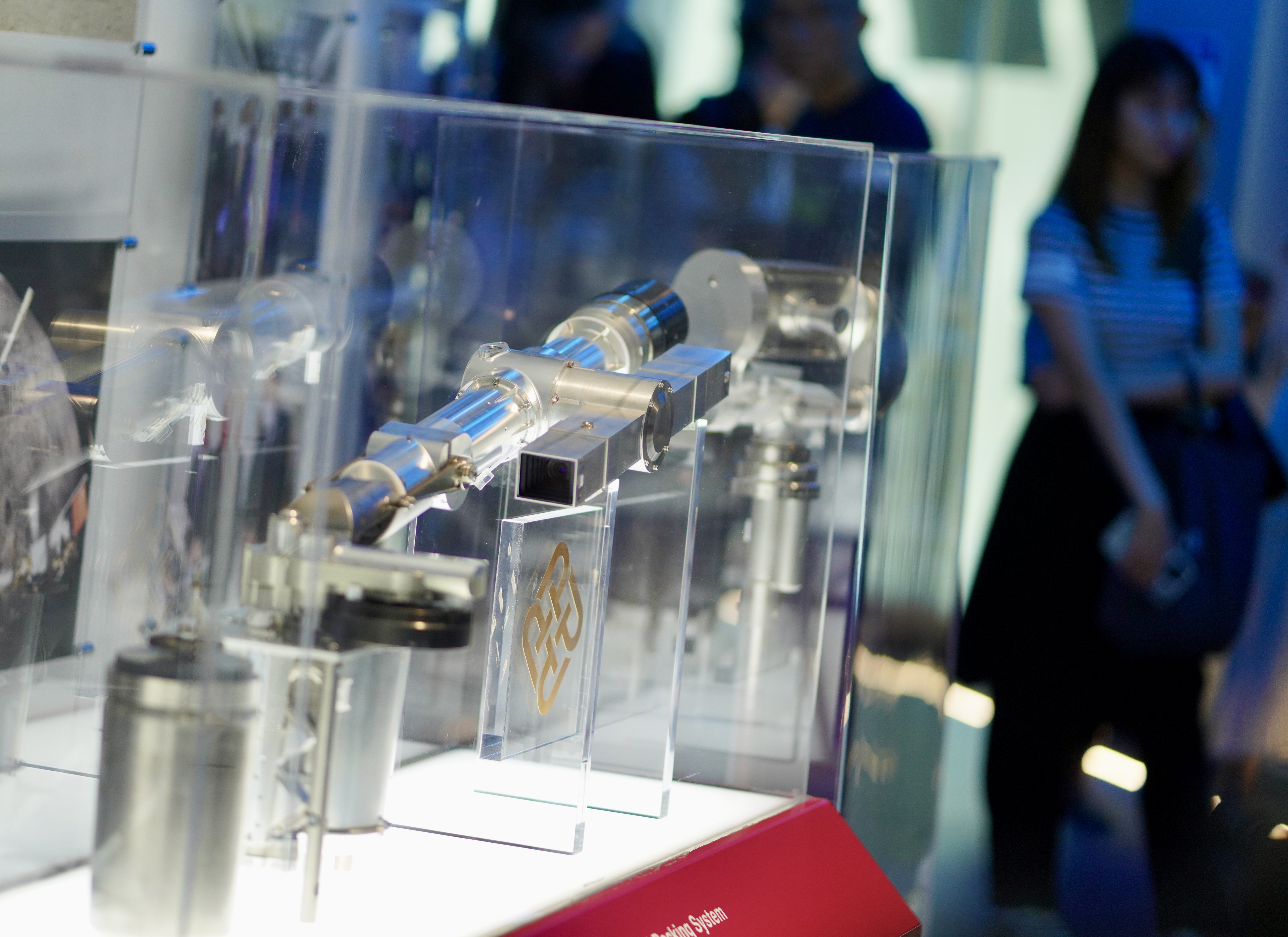
HONG KONG – A sampling device co-developed by Hong Kong Polytechnic University researchers has played a critical role in helping China’s lunar probe on its unprecedented mission to collect topsoil from the far side of the moon.
The Chang’e 6 probe, after collecting samples from the lunar surface over two days, launched from the moon on Tuesday morning. On Thursday, it delivered the sample container to the reentry capsule in lunar orbit, which will later transport them to Earth.
This mission marks the first time soil samples from the moon’s far side will be brought back to Earth, with the probe set to return in late June.
READ MORE: Chang’e 6 completes historic feat
At a news conference on Friday, PolyU scientists presented its Surface Sampling Execution Device — developed in collaboration with the China Academy of Space Technology over five years.
Yung thanked the nation for entrusting Hong Kong scientists with such a significant part of the project, allowing them to showcase the city’s expertise in space technology research and its potential for greater contributions to the country’s deep-space exploration
Yung Kai-leung, head of PolyU’s Research Centre for Deep Space Explorations, said the university team designed and manufactured several core parts of the device, including the two prongs for extracting samples and a close-up camera for navigation.
The camera is capable of enduring extreme temperatures on the lunar surface, which can exceed 120 C, Yung said.
Yung said the samplers are equipped with an encapsulation system to allow fully automated sampling across multiple sites, a breakthrough technique eliminating the need for drilling or manual excavation, as relied on by other countries.
After collecting the samples, the encapsulation system seals them in containers so they can be taken to the ascender, the part of the probe responsible for transporting samples back into lunar orbit, Yung explained.
Unlike previous lunar expeditions in which landers collected soil from the near side of the moon, the Chang’e 6 mission to the far side poses far more challenges.
Given it is impossible to directly observe the moon’s far side from Earth and simultaneously communicate with devices operating there, Yung said his team needed to make several hardware improvements so the mission could be completed more quickly.
ALSO READ: Chang'e-6 mission: Lunar samples successfully transferred to returner
He expressed confidence that the Chang’e 6 probe collects more topsoil than its predecessor, Chang’e 5, which returned to Earth on Dec 17, 2020, with 1.73 kilograms of topsoil.

He said that the topsoil collected from the far side of the moon is scientifically valuable due to its heavily cratered surface and greater exposure to the solar wind.
Yung thanked the nation for entrusting Hong Kong scientists with such a significant part of the project, allowing them to showcase the city’s expertise in space technology research and its potential for greater contributions to the country’s deep-space exploration.
University Vice-President Christopher Chao Yu-hang, called on the Hong Kong Special Administrative Region government to consider providing long-term support to local universities for developing space exploration programs and encouraging academics to carry out related research.
A long-term plan to boost the city’s strengths in space science will also have a great impact on cultivating interest in astral exploration among younger generations, according to Chao.
He revealed that PolyU will hold an aerospace innovation research summit on Nov 19, focusing on developing startups in the space industry. He said he hopes such activities will help attract more young minds to the field.
With over 30 years of experience in space research, PolyU has a rich history of involvement in national space missions since 2010, including the Chang’e 3, 4, and 5 lunar expeditions, and Tianwen 1, China’s first Mars mission.
Contact the writer at atlasshao@chinadailyhk.com



